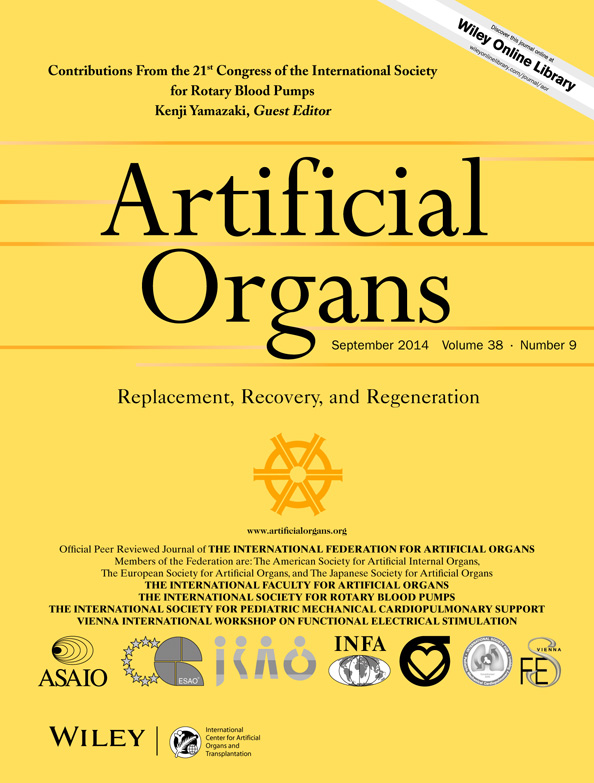A Hybrid Mock Circulation Loop for a Total Artificial Heart
Abstract
Rotary blood pumps are emerging as a viable technology for total artificial hearts, and the development of physiological control algorithms is accelerated with new evaluation environments. In this article, we present a novel hybrid mock circulation loop (HMCL) designed specifically for evaluation of rotary total artificial hearts (rTAH). The rTAH is operated in the physical domain while all vasculature elements are embedded in the numerical domain, thus combining the strengths of both approaches: fast and easy exchange of the vasculature model together with improved controllability of the pump. Parameters, such as vascular resistance, compliance, and blood volume, can be varied dynamically in silico during operation. A hydraulic–numeric interface creates a real-time feedback loop between the physical and numerical domains. The HMCL uses computer-controlled resistance valves as actuators, thereby reducing the size and number of hydraulic elements. Experimental results demonstrate a stable interaction over a wide operational range and a high degree of flexibility. Therefore, we demonstrate that the newly created design environment can play an integral part in the hydraulic design, control development, and durability testing of rTAHs.




